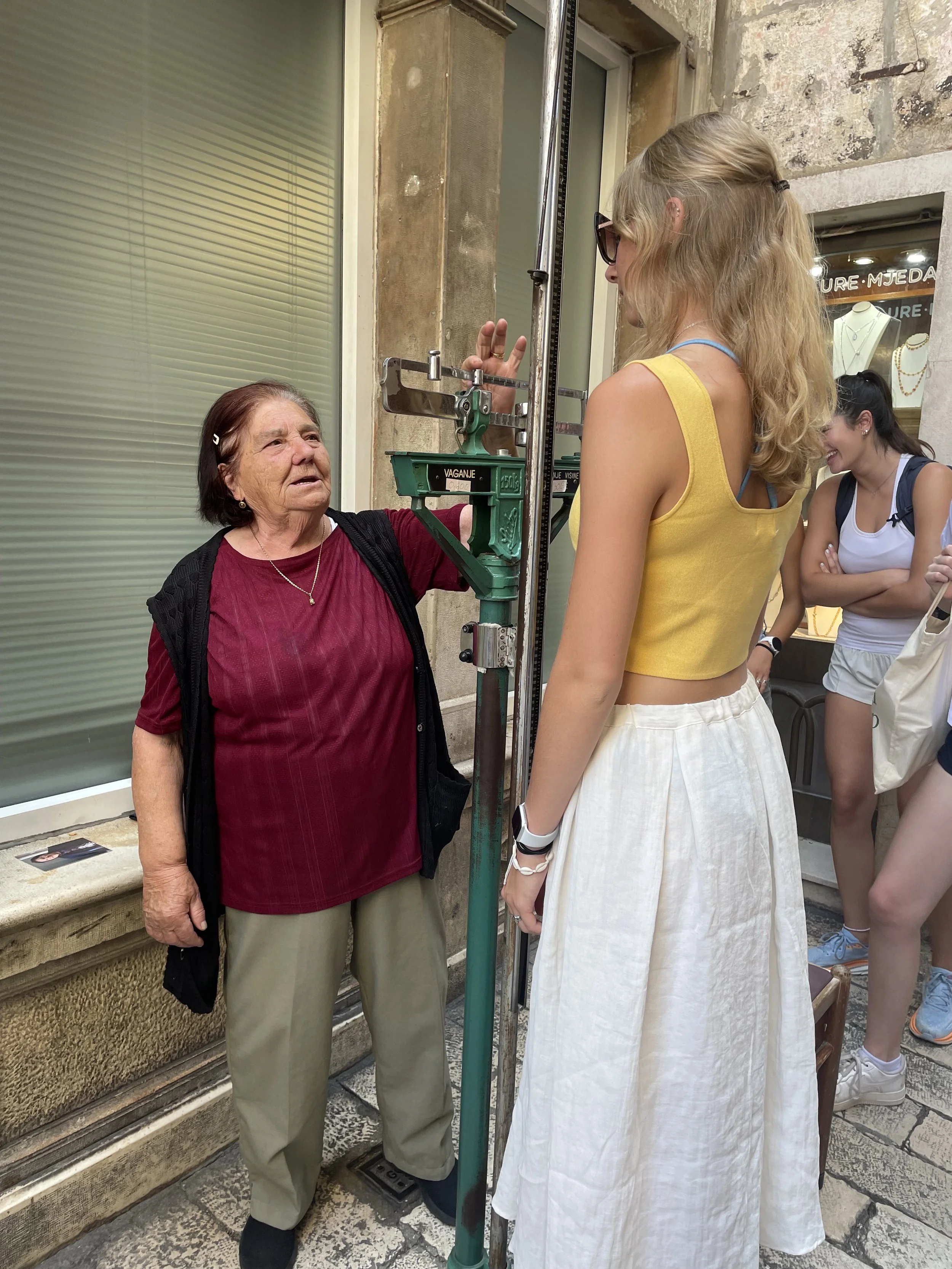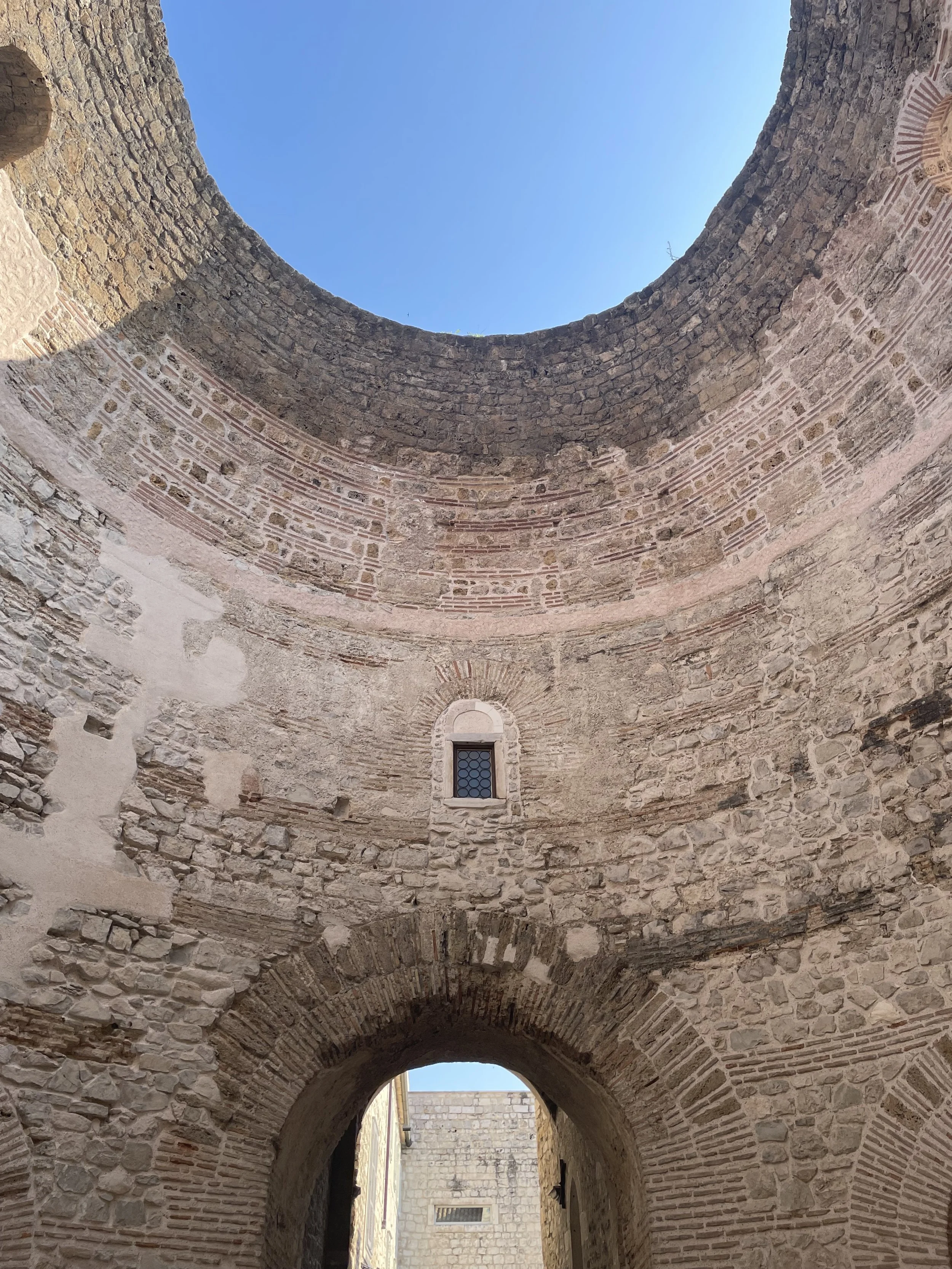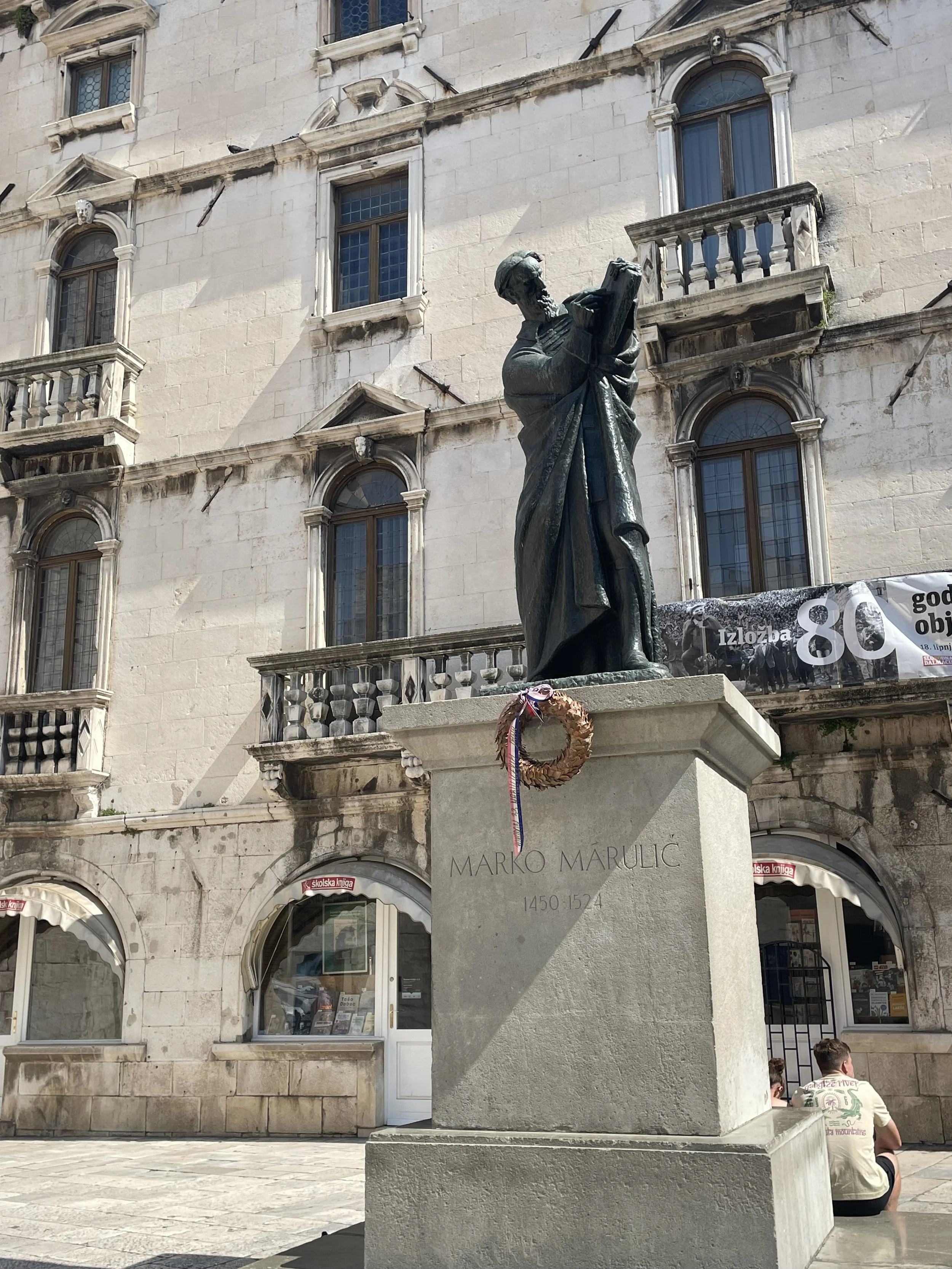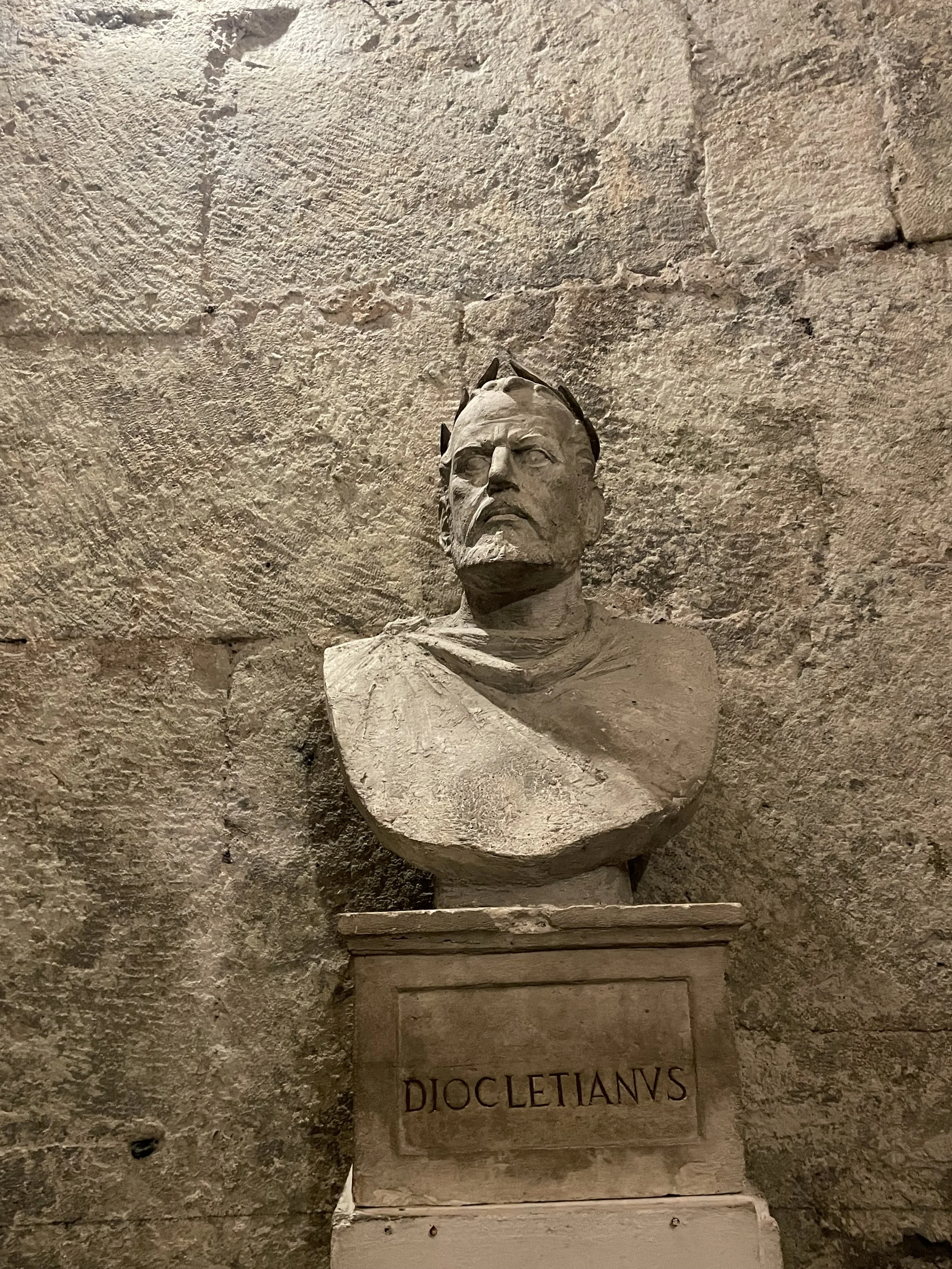Stubbornness is the Root of Tradition in Croatia
“We’re as stubborn as Dalmatian dogs” Anna says proudly as we walk through the city square past the Morpurgo Bookstore, one of the oldest bookstores in Europe. I look up in awe at the architecture. The worn-down white brick and the white-washed wood shutters provide a feeling of authenticity. In the near distance, stands a clock tower. The sun-shaped clock pointing towards the Roman numerals intrigues me as I think to myself, what is the history behind that clock tower?
The history of Croatia is inspiring as the territory was ruled by the Republic of Venice for over 400 years. However, despite the Italian influence, the local people preserved their own traditions. We continue to walk as we pass a corner and stop to see an older woman standing with a traditional weighing scale. “This is a legend in our city” declares Anna. The woman is leaning against the windowsill behind her with a paper cup on display for small change. Her name is Maria and Anna translates as she explains that for generations, it was known that you could come to the city to get your height and weight measured on the street as no one had scales at home. Maria smiles as she tells us that her mom had done this for 30 years before she passed and she feels that it's her obligation to continue the family tradition. Even though people now have scales in their homes, she enjoys offering the service and many local people appreciate and support her. Maria and I do not speak the same language however, I was able to understand the sense of pride she has for her family and culture from the genuine tone of her voice and the slight smile washed upon her face. Maria has an appreciation for tradition.
As we walk among the walls of Diocletian’s Palace, I take in the detailing of the Roman architecture. The small carvings within the white limestone and the traditional arches throughout the palace are beautiful. It is so rare to see the preservation of ancient Roman architecture to this extent. Once there was the emperor Diocletian roaming the palace as he planned for his retirement and now, I am walking among the same walls on the same ground as the emperor did. The palace walls act as a symbol of the history of the city. They still stand high after all of these years because the people of Split are proud of their culture and they want people to know the history that shapes them.
I was expecting to be amazed by the turquoise beaches and the delicious Mediterranean food however, I never thought that I would be as inspired by the architecture and the history of the city as I was. Where I am from, Canada, is a country that is only 156 years old therefore, this was my first time walking through a city with architecture that dates back to the fourth century AD. The walls of the palace tell a story and just from being in their presence, I was moved by the history they told me with their intricate detailing and unique features.
We eventually reach the fruit square. Anna explains that it is named the fruit square because it used to be a fruit market decades ago. “In Split, when something gets named, the name stays forever.” In the middle of the fruit square stands the father of Croatian literature, Marko Marulić. This man wrote the first poem in the Croatian language which gave courage to local people to fight against Turkish invasion. I stand there looking up at this statue which signifies bravery and courage. I imagine myself as a local. Retrieving inspiration from this statue as it reminds me of how my people had to fight for their culture. It would encourage me to do the same thing in the current world.
Croatia has become an extremely popular destination for tourists. Every second person you pass on the main street in Split either has a map or camera in hand. Croatian people are friendly and happy to share their culture with tourists however, they are also protective. Croatians place importance on culture and traditions and they will fight for them today just as they always have. So, despite many people seeing Croatia as their dream beach destination, the locals are passionate about protecting their traditions from the effects of tourism and continuing to build upon the story of a city that dates back to 295 AD.
We eventually make our way to the promenade of Split. On one side is the view of the crystalline turquoise water with an array of boats bobbing up and down. On the other side are the high walls of the palace. Locals are sitting as they sip on their coffee and obviously observe the people as they pass by. “In Croatia, everything is done with a cup of coffee,” Anna says as she smirks. Meeting with friends over a cup of coffee is an activity that can last up to two hours and locals usually come every day when they get a break from work. Despite the rise in tourism, the oldest cafe in town makes sure that there is a table saved every morning for a group named the “Wise Men”. In the 19th century, the “Wise Men” were a group of nobles that would get together to criticize the mayor and talk about politics over a cup of coffee. This tradition still continues as a group of locals gather every morning at their table that remains empty until they come.
As we near the end of our tour, I recall when we were passing by the National Theater of Croatia. My attention was drawn to a local walking through the square passing by a statue of Gajo Bulat, the second Croatian mayor of Split. As he walked by, he gave the statue a small pat on the back. At the moment, I didn’t think much of this action but now, I realize that the pat on the back was out of gratitude and pride for his city. Gajo Bulat opened the Croatian National Theater with the hopes to influence people to be proud of their Croatian heritage as before he was mayor, only Italian literature, operas, and poetry was promoted in the city. “The opening of the theater was the time of an awakening of Croatian national pride,” Anna said with dignity.
Croatians have continued to fight for their culture and the pride that locals have for their country is evident. It is through stubbornness that Croatians have been able to achieve this. Even though there is no practical reason for Maria to continue weighing and measuring people on the streets of Split, she refuses to stop out of tradition. Just like Maria, many locals are holding onto their own traditions. They are using their ancestors as examples as they chose not to conform to the Italian influence and they preserved the history of their city through the palace walls. Local people today continue with practices that some may call outdated but they refuse to stop because in Croatia, tradition has been shown to root from stubbornness.



